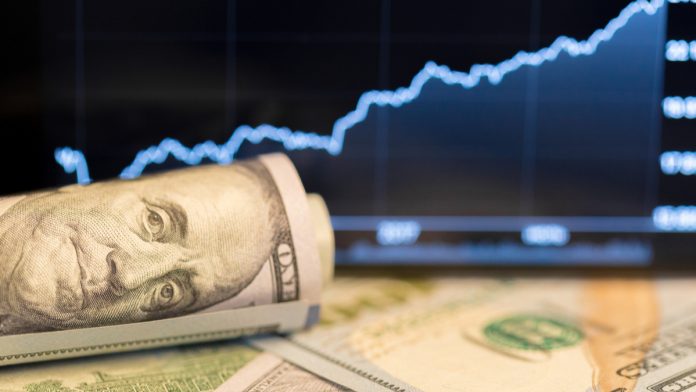- Pakistani Rupee (PKR) rises on upbeat mood in the market after Chinese data impresses
- Pakistan debt – GDP ratio rises to 87.2%
- US Dollar (USD) experiences worst August performance in 5 years
- US ISM Manufacturing data due tomorrow
The US Dollar Pakistan (USD/PKR) exchange rate is heading lower at the start of the new week, extending losses from the previous week. The pair slipped from 168.40 to close on Friday at 166.47.
At 08:45 UTC, USD/PKR trades -0.16% at 166.20 after striking a two-week low of 166.00.
A broad risk on sentiment in the financial markets is boosting the Rupee, despite rising oil prices and a rising debt to GDP ratio.
According to the finance ministry, Pakistan’s public debt to GDP ratio jumped to 87.2% in June at Rs36.6 trillion. This is an increase of Rs11.35 billion or 45% over the past two years alone
The finance ministry said that the coronavirus pandemic has had an adverse impact on the Pakistan economy resulting in a reduction of revenue and an increase in spending.
Oil prices are on the rise owing to a 30% reduction in output in Abu Dhabi and encouraging Chinese data. West Texas Intermediate rallied over 1%. As Pakistan is an oil buyer, rising prices can negatively impact the economy.
The US Dollar is attempting to move higher versus its major peers however it is still on track for its fourth straight month of losses in August and its worst August performance in 5 years. Concerns over the health of the US economic recovery, the lack of additional support from Congress and a shift in policy framework by the Federal Reserve last week have all dragged on the greenback.
Investors are still adjusting to the change of policy towards a more relaxed approach to inflation, which would mean lower interest rates for longer.
Whilst there is no high impacting US data due for release today, the US economic calendar is full this week culminating with the non farm payroll report on Friday. However, prior to the closely watched jobs report, US ISM manufacturing data will be in focus tomorrow, with analysts expecting the data to show the that the sector continues to expand.




